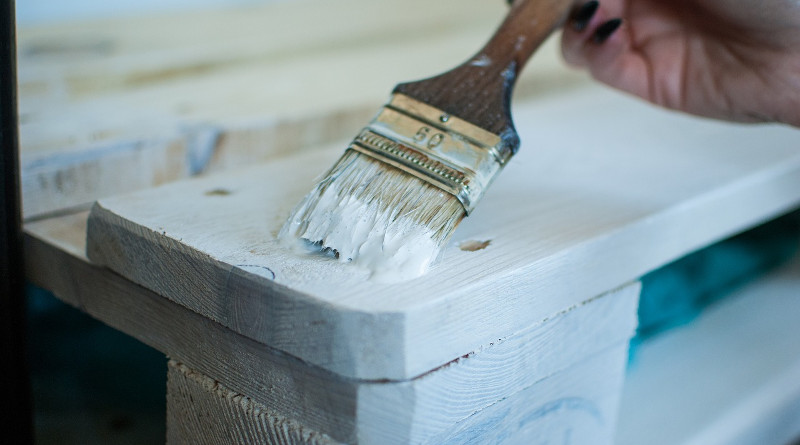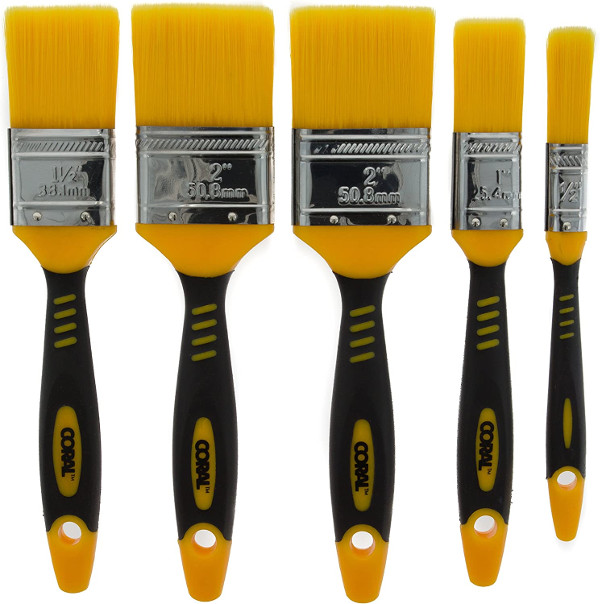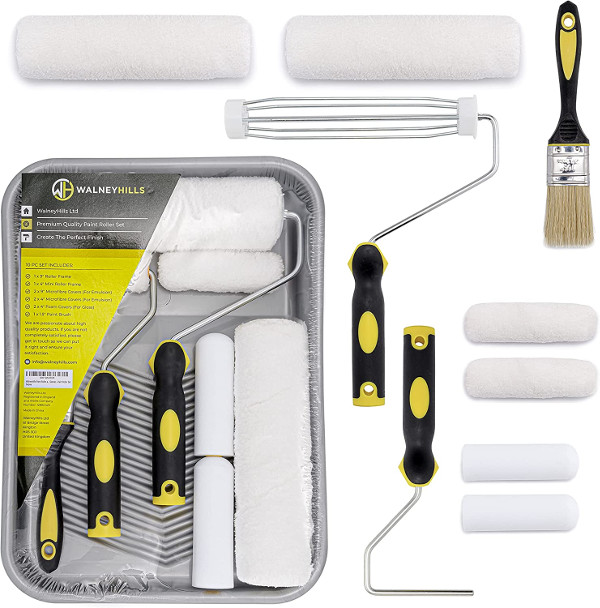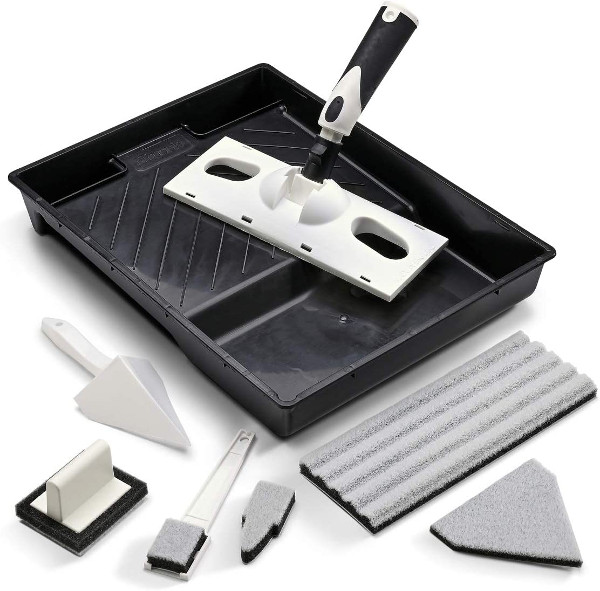If you have not done much painting around your home, it isn’t always obvious which paintbrush or roller you should be using. This guide will help you learn about the different paintbrushes and rollers you will need for different painting jobs around the home. From touching up the paint on a door frame to painting the render on the outside of your house.
Having the correct equipment is half the battle when painting the walls or woodwork of your home. Whilst you may need to buy or hire some specialist equipment from time to time, the list below is a good starting point for the tools you will need when redecorating your house.
Paintbrush or Roller, Which Should You Use?
The choice between using a paintbrush or a roller is usually an obvious one. If you are painting an entire room, using a 5cm brush is not going to be your first choice. That said, if you are using a roller to paint walls, you will normally also need a small paintbrush for the detail work. Detail work is cutting in along the edge of the ceiling and skirting board, or around door and window frames. These areas are extremely hard to paint tidily with only a roller.
When painting walls, we recommend having a large roller, a detail or radiator roller (for painting behind the wall-mounted radiators in the room), and a 3-4cm paint brush for the detail work. The type of roller you choose depends on the walls you are painting (see below).
There is also the option to use paint pads. These are flat pads covered in fine bristles, with a handle on the back. Paint pads are available in a variety of sizes, from large pads designed to replace a roller, to small detail pads for cutting in. You can even get pads with an angled edge for painting into corners more easily.
Paint pads can be more effective at making the paint spread further, and there is usually less waste and splatter than there is when using a roller.
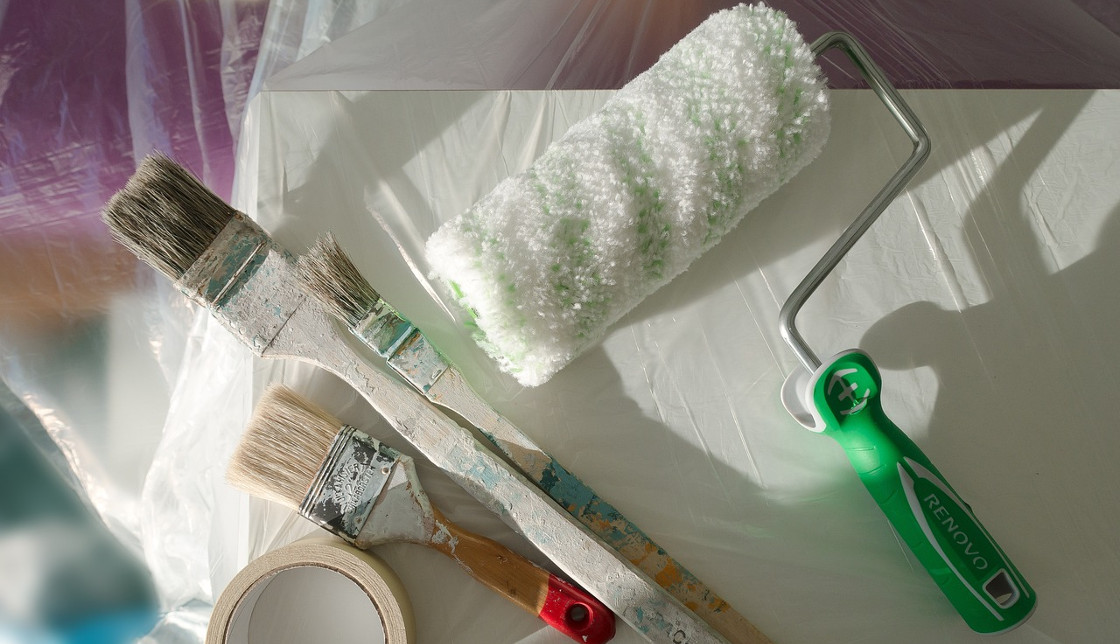
Choosing the Best Paintbrush for DIY
Choosing the best paintbrushes for each particular painting job (glossing wood, applying emulsion, cutting-in, painting masonry, etc.,) will help to ensure the best finish your skill allows. You might be surprised how much difference using one paintbrush over another will make to the finish.
As a general rule, and as is so often the case with tools, buy the best brushes you can afford in a range of sizes (this applies to both paintbrushes and rollers). Try to get a brush with natural bristles or good quality synthetic bristles for the best finish. Quality brushes, if cared for after use, can actually improve with age.
Useful paintbrush sizes include 18mm, 25mm, 50mm, 100mm and 125mm. You may also want to buy a radiator brush. These have a metal handle, which can be bent to allow access behind radiators.
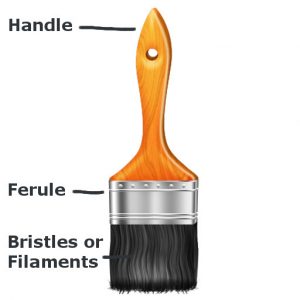
Synthetic Paintbrushes
Cheaper paintbrushes will usually have synthetic bristles (sometimes called filaments), but not all synthetic bristles are the same. Normally made from nylon or a nylon-polyester mix, synthetic bristles can either be solid or hollow and can be tapered or untapered. If you have the option (although it is not always clear from the packaging which type of bristle a paintbrush uses), hollow tapered synthetic bristles will produce a better result than solid untapered.
The good thing about synthetic bristles is that they will tend to last longer than natural bristles, and will put up with less careful care and cleaning after use. They can also be better for painting with water-based paint as they will not expand when they get wet.
Natural Paintbrushes
Paintbrushes with natural bristles, which are made from a variety of animal hair including hog hair, ox ear hair, and horse hair, are generally seen as higher quality than synthetic brushes, and will normally be more expensive to buy. But just because a brush is natural, that doesn’t mean it is better for a particular painting job than a cheaper synthetic brush.
Where a good-quality natural bristle paintbrush makes the most difference is when using paints with very fine finishes, such as enamel paint and high-gloss varnish. In general, natural paint brushes will perform better with any oil-based paint. The sign of a good quality natural paintbrush is tightly packed bristles (evenly packed even under the ferrule) that spring back when bent. You should also look for bristles that are split or “flagged” at the end. This helps with even paint release and a smoother finish.
Paintbrush Shapes
There are numerous brush shapes available for all manner of different surfaces and paint types. Here are the main ones you will probably encounter as a DIY decorator.
- Angled Brush: Ideal for painting edges and cutting in. An angled brush will have a regular slope to the bristles when looking at the flat face of the brush.
- Flat Brush: Best for painting flat surfaces, bristle length viewed from the wide face of the brush does not change.
- Tapered Brush: A tapered brush can help to improve control. Bristle length, viewed from the narrow face of the brush, is longer in the centre and tapers toward the edges.
- Striker Brush: A large round (cylindrical) brush, normally used only for exterior painting, particularly in difficult areas.
Common Types of Paint Roller
As with paintbrushes, it is best to buy as good quality rollers as your budget allows. Rollers give a smooth, flat finish over large surfaces and are ideally suited to working with water-based paint. Different roller types include:
- Foam – Cheap and easy to clean, but will not give the best finish.
- Mohair – The very fine texture allows for a very smooth finish. Not for use on textured surfaces.
- Shaggy Pile – The thick pile makes this type of roller ideal for painting textured surfaces, which a smoother roller would not cover as well.
- Radiator Roller – Designed with a thin head and a long handle, these are perfect for getting behind radiators, etc.
When to Use Paint Pads
Good quality paint pads will give a very good finish on smooth or lightly textured surfaces. They are generally made of a thin layer of mohair on top of a foam base. They come in a range of sizes and often allow for handles to be attached so you can reach high places.
As previously mentioned, paint pads can be less messy than rollers. They can also make painting walls very quick, once you get used to using them and depending on the surface you are painting. Paint pads are better for use on very smooth surfaces, but can also work on artexed surfaces.

